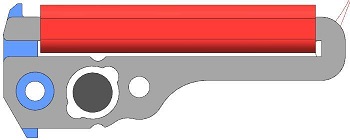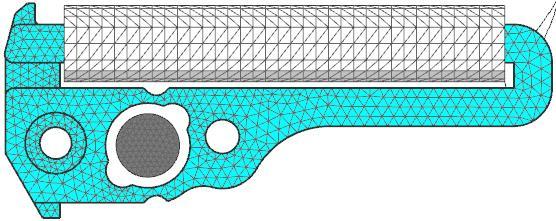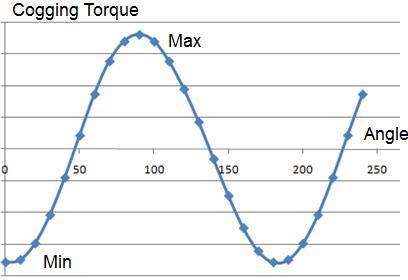The aim of this analysis is to analyze the torque behavior of the rotating magnet of this Timex M901 motor. In particular, the angle of the locking points will be found and the associated holding torques.
Initial Situation
Timex Motor M901
The Lavet stepping motor is a single-phase stepping motor. He serves as a drive in electro-mechanical quartz and radio watches.
The aim of this analysis is to analyze the torque behavior of the rotating magnet. In particular, the angle of the locking points will be found and the associated holding torques.
By selectively altering the geometry we will adapt the cogging torque and angle to the requirements.
 Lavet Motor M901 (modified). With friendly permission of Timex Germany Gmbh
Lavet Motor M901 (modified). With friendly permission of Timex Germany Gmbh
Customer: Timex Group USA, Inc.
Date: 2012
Version: NX7.5
Appropriate Method
3D Magnetostatic Analysis
The NX CAD assembly of the motor model is meshed in NX Advanced Simulation. The nonlinear material properties of the steel were obtained from the manufacturer and stored in the NX material library.
To account for the rotation of the magnet many separate FEM analyzes were performed whereby the direction of magnetization of the magnet has been rotated step by step. These individual steps were controlled by a script that can be used for any kind of parametric studies
 Mesh for the Lavet Motor
Mesh for the Lavet Motor
Result
Cogging Torque over Angle
After the analysis has been completed, the results of the individual steps are examined. In addition to the results of the flux density and field strength, the torque on the rotor is the main result.
This result is automatically displayed as a graph in either Excel or in NX’ graphing tool.
 Graph of the Cogging Torque on the Rotor
Graph of the Cogging Torque on the Rotor
In the first step all results from the analysis are compared against measurements and past experience.
A good agreement of less than 5% has been found so in the next step geometry modifications follow to drive the angle and torque to design requirements.



